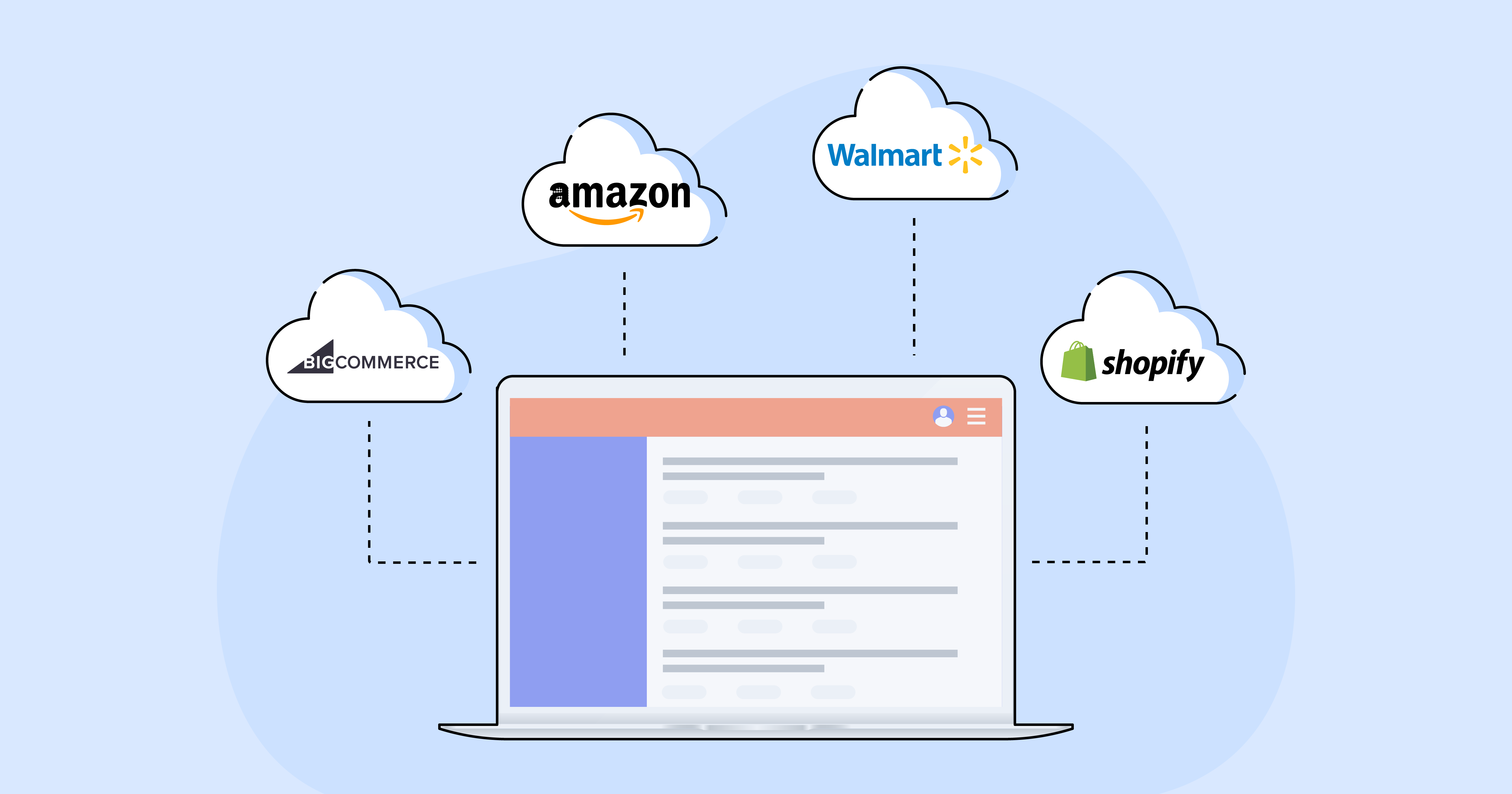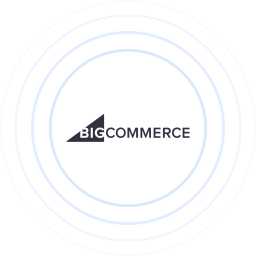
Adding a New Online Sales Channel? Read This First
Contents
It’s no secret that the ecommerce industry is growing at an explosively fast rate. Case in point: In 2019 alone, online retail sales amounted to $3.53 trillion worldwide, and they’re projected to skyrocket to $6.54 trillion by 2022.
Shopping has now achieved what’s most likely a permanent spot as one of the most popular online activities worldwide, meaning retailers must seize their slice of the e-tail pie if they want to increase revenues and maintain long-term sustainability. The strategy that’s front and center for savvy entrepreneurs? Multichannel ecommerce.
If you’re ready to scale your ecommerce business to a multichannel operation—or further grow your existing multichannel store—keep reading. We’ll take a deep-dive into the pros and cons of both marketplaces and ecommerce platforms, and provide insights into the options available for sellers with growing enterprises.
While your business is growing, spend less time on ecommerce accounting. Let Webgility handle that side of your business.
Marketplaces vs. Online Stores
When launching a new online sales channel, the first order of business is deciding where to sell your items: on a marketplace or your own online store using an ecommerce platform. Let’s kick things off by running down the pros and cons of both.

Marketplace Pros
- Popularity: Most marketplaces have already built a sizable customer base primed for your products.
- Trust: Customers have established a certain level of trust in leading marketplaces, a big plus for smaller or expanding stores that lack sizable brand recognition.
- Available logistics: Most marketplaces already have logistics in place, so you won’t budget precious time and energy managing those issues.
- Inventory: Some marketplaces will also take care of your product inventory, so you won’t have to rent a warehouse to store your items.
- Customer support: Many marketplaces even have a customer support team that can handle your customer queries.
Marketplace Cons
- Competition: In marketplaces, you’re competing with many other retailers selling the exact same products as you.
- Profit-focused: Marketplaces are profit-focused rather than seller-focused, so they’re likely more concerned with their own overall sales volume than the needs of your specific business.
- No SEO power: You can’t manage SEO for your own brand or product on a marketplace, and have minor control over the pages on which your product shows up.
- No CRM power: Most marketplaces don’t give you access to your customer’s information, so you can’t contact them directly.
- Minimal customer loyalty: Because you can’t build a relationship with your customer on a marketplace (see the point above) it’s harder to build loyalty for your product.
- Fees and other expenses: Marketplaces charge fees for listings, sales, shipping, and the other “pros” — and make these fees difficult to track.

Online Store Pros
- Customizable: With a little know-how, you can customize both the branding and user experience of your online store however you’d like, then update it as needed.
- CRM: Online stores give you full access to shopper data, so you can use it to build relationships with your customers and send them newsletters, discounts, and other promotional information. Brand/customer relationships foster long-term loyalty, boosting your customer lifetime value while lowering customer acquisition costs.
- SEO: Because you have full ownership of the site, you can leverage SEO and other on-page marketing strategies to scale your business by getting your products in front of new eyes.
Online Store Cons
- Harder to scale: While it’s easier to personalize the look and feel, SEO, and marketing tactics behind your own online store, it also takes a lot more effort because you’re doing it on your own time (and dime).
- Product Size: If you’re planning to sell large products, storage and shipping can get expensive, and you don’t have a marketplace fulfillment center to back you up.
- Customer Service & Returns: You’ll need to manage customer service and returns on your own without the support of a marketplace’s built-in customer service team.
Best Marketplaces: Amazon and Walmart
As two of the largest online marketplaces in the world, Amazon and Walmart are worth considering for sellers looking to maximize traffic. Here’s why.

Amazon
As the top grossing marketplace in the United States, Amazon is the go-to site for millions of online shoppers. The impact on its sellers? Three out of five say their profits are rising, 85% are profitable, and 47% are self-employed and live off of their Amazon income.
If you’re looking to sell your product on Amazon, you’ll first need to choose between either FBM (Fulfillment by Merchant) or FBA (Fulfillment by Amazon). FBM sellers have to take care of everything from picking and packing to shipping, delivery, and returns on their own, but with FBA, Amazon manages the entire post-purchase experience.
Here’s a rough overview of how FBA works for those who are unfamiliar: Once you create your Amazon Seller account, you send your products to Amazon to store in their fulfillment centers. Amazon then ships your products to your customers whenever orders are placed and handles customer service and returns.
But sellers, beware: many merchants have gotten burned by Amazon due to its confusing web of fees and expenses, getting undercut on pricing by competitors, and even seeing their products replicated and sold directly by Amazon.
Once your online store is set up and you’re selling products, Webgility can help you with data entry, accounting and sales tax filing.

Walmart
Walmart Marketplace, the third largest online marketplace in the United States, is another great option to consider if your products fit in with what Walmart sells in-store and online. The platform saw 79% growth in 2020 alone, and now thousands of sellers offer their products to 120 million unique shoppers. It’s a nearly guaranteed way to expand your reach, and you only pay for what you sell—no setup or monthly fees required.
There are a couple of steps to follow if you want to sell your product on Walmart Marketplace. All sellers must first be approved by Walmart and register with Payoneer for payment purposes. Sellers can then select pricing and shipping models, and you must complete the launch checklist before your store can go live.
With that, you’re all set to start selling on Walmart.
Best Ecommerce Platforms: Shopify and BigCommerce
When it comes to ecommerce platforms, Shopify and BigCommerce are the market leaders you need to consider.

Shopify
Shopify is a hosted ecommerce platform, so you don’t have to worry about web hosting or installing software. Instead, you’ll pay a monthly subscription that you can pick depending on your required features. Once you’ve selected your subscription, you need to create a username and password, and you’ll be able to manage your store no matter where you are.
Shopify has everything you need, whether it’s your first online sales channel or your tenth— templates for your website, a payment processor, email marketing, blogging tools, and more. You can also customize your store with several applications, and you’ll have access to all of your customers’ information along with other statistics and analytics. It’s no wonder why the platform powers more than 1.7 million businesses worldwide, and captured almost 20% of the market share, created 3.6 million jobs, and driven $307 billion in economic impact in 2020. It’s intuitive and affordable, facilitating entrepreneurship around the world.

BigCommerce
BigCommerce is another leading ecommerce platform builder with excellent scalability. It boasts a plethora of built-in sales tools, as well as advanced SEO and multichannel integration. Serving more than 60,000 merchants in more than 150 countries, the ecommerce platform is well-suited to businesses of all sizes, from startups to to large enterprises. Like Shopify, BigCommerce requires a subscription fee, and allows you to also sell on other platforms such as Amazon, Instagram, and Etsy along with your store. Worried about outgrowing your current ecommerce platform? Then BigCommerce could be the right choice for your business.
Moving Toward Multichannel
When scaling your ecommerce operation, adding more sales channels is a surefire way to expand your reach and get your products in front of new shoppers. There are several factors to consider when choosing your next channel, and the final decision depends on your business’ unique needs. But regardless of how you expand, going (or growing) multichannel is a proven profit driver and a key strategy for long-term success.
Has your ecommerce business recently added a new sales channel? We’d love to hear from you! Drop us a note on Facebook, Twitter, or LinkedIn — or email us at marketing@webgility.com
About the Author
Moritz Bauer is an online seller from Germany. He’s studying business management at a master’s level and writes articles about Fulfillment by Amazon. When he’s not at work, you can find him in an Italian restaurant with white wine and pasta 😉




 The Webgility Team
The Webgility Team


